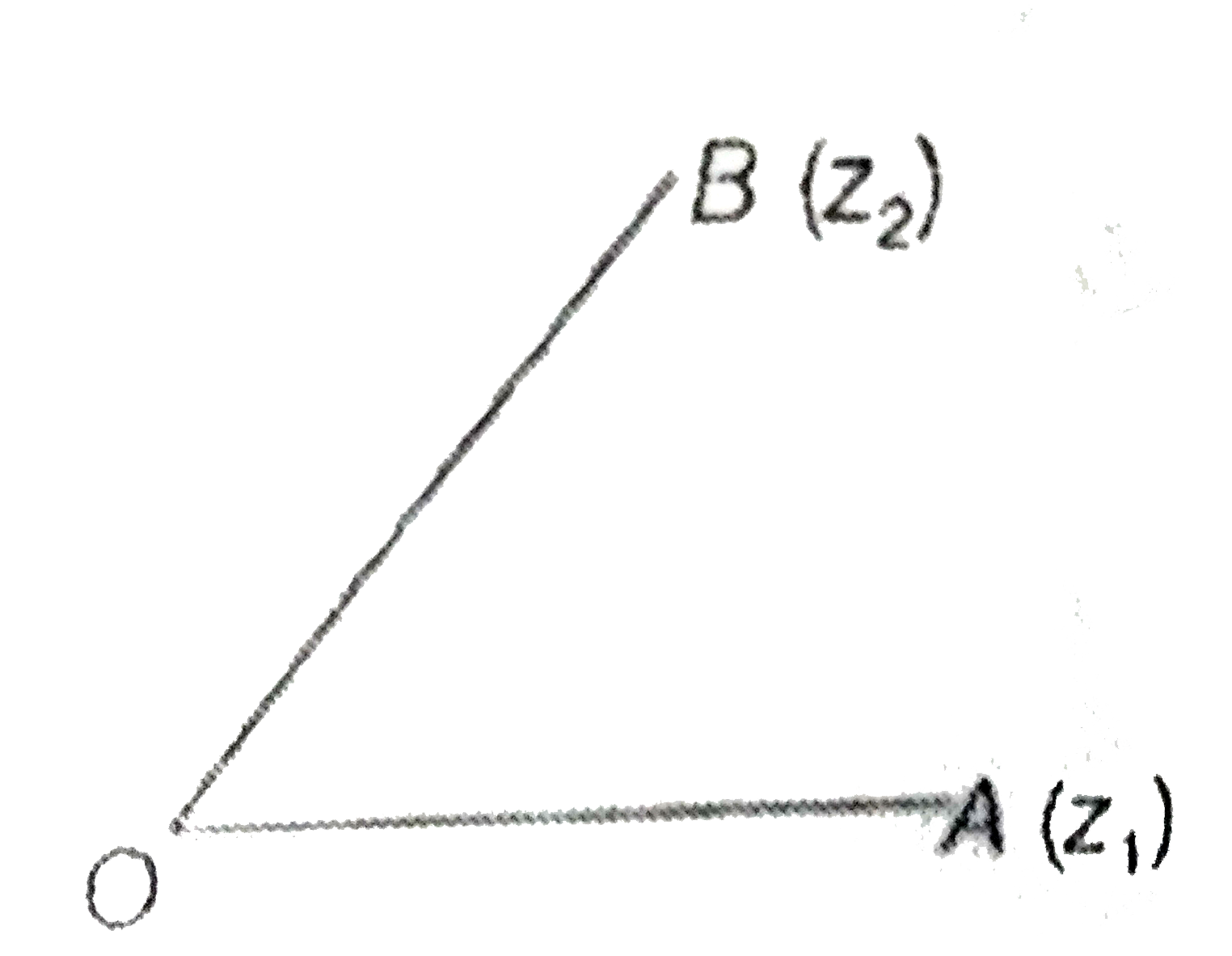Let z1andz2 be the root of the equation z2+pz+q=0 where the coefficient p and q may be complex numbers. Let A and B represent z1andz2 in the complex plane. If ∠AOB=α≠0and0andOA=OB,whereO is the origin prove that p2=4qcos2(α2)
Since z1+z2=−andz1z2=q
Now z1z2=|z1||z2|(cosα+Isinα)
⇒z1z2=cosα+Isinα1
[∵|z1|=|z2|]
Applying componendo and dividendo, we get
z1+z2z1−z2=cosα+isinα+1cosα+isinα−1
=2cos2(α/2)+2isin(α/2)cos(α/2)−2sin2(α/2)+2isin(α/2)cos(α/2)
=2cos(α/2)[cos(α/2)+isin(α/2)]2isin(α/2)[cos(α/2)+sin(α/2)]
=cot(α/2)i=−icotα/2⇒−pz1−z2=−icot(α/2)
On squaring both sides , we get p2(z1−z2)2=−icot(α/2)
⇒ p2(z1+z2)2−4z1z2=−cot2(α/2)
⇒p2p2−4q=−cot2(α/2)
⇒p2=−p2cot2(α/2)+4qcot2(α/2)
⇒p2(1+cot2α/2)=4qcot2(α/2)
p2cosec2(α/2)=4qcot2(α/2)
⇒p2=4qcos2α/2

Topper's Solved these Questions
- COMPLEX NUMBERSBOOK - IIT JEE PREVIOUS YEARCHAPTER - COMPLEX NUMBERSEXERCISE - TOPIC 4 ROTATION OF A COMPLEX NUMBER (INTERGER ANSWER TYPE QUESTION )
1 Videos
- COMPLEX NUMBERSBOOK - IIT JEE PREVIOUS YEARCHAPTER - COMPLEX NUMBERSEXERCISE - TOPIC 5 DE-MOIVRES THEOREM,CUBE ROOTS AND nth ROOTS OF UNITY ( OBJECTIVE QUESTIONS I)(ONLY ONE CORRECT OPTION)
12 Videos
- COMPLEX NUMBERSBOOK - IIT JEE PREVIOUS YEARCHAPTER - COMPLEX NUMBERSEXERCISE - TOPIC 4 ROTATION OF A COMPLEX NUMBER (FILL IN THE BLANKS )
3 Videos
- CIRCLEBOOK - IIT JEE PREVIOUS YEARCHAPTER - CIRCLEEXERCISE - Topic 5 Integer Answer type Question
1 Videos
- DEFINITE INTEGRATIONBOOK - IIT JEE PREVIOUS YEARCHAPTER - DEFINITE INTEGRATIONEXERCISE - LIMITS AS THE SUM
6 Videos
Similar Questions
Let z1andz2 b be toots of the equation z2+pz+q=0, where he coefficients pandq may be complex numbers. Let AandB represent z1andz2 in the complex plane, respectively. If ∠AOB=θ≠0andOA=OB,whereO is the origin, prove that p2=4qcos2(θ/2).
View SolutionLet z1andz2 be the roots of the equation 3z2+3z+b=0. If the origin, together with the points represented by z1andz2 form an equilateral triangle then find the value of b.
View Solution
Knowledge Check
Let z1andz2 be the root of the equation z2+pz+q=0 where the coefficient p and q may be complex numbers. Let A and B represent z1andz2 in the complex plane. If ∠AOB=α≠0and0andOA=OB,whereO is the origin prove that p2=4qcos2(α2)
A4qcosα2B4qcos2α2C4qsinα2D4qsin2α2z1andz2 are the roots of the equaiton z2−az+b=0 where |z1|=|z2|=1 and a,b are nonzero complex numbers, then
A|a|≤1B|a|≤2C2arg(a)=arg(b)Dagra=2arg(b)Let z1 and z2 be the roots of the equation z2+pz+q=0. Suppose z1 and z2 are represented by points A and B in the Argand plane such that ∠AOB=α, where O is the origin.
Statement-1: If OA=OB, then p2=4qcos2α2
Statement-2: If affix of a point P in the Argand plane is z, then zeia is represented by a point Q such that ∠POQ=α and OP=OQ.AStatement-1 is True, Statement-2 is True: Statement-2 is a correct exp,anation for statement-1.BStatement-1 is true, statement -2 is true, Statement-2 is not a correct explanation for statement-1.CStatement-1 is True, statement-2 is false,Dstatement-1 is False, Statement-2 is true.
Number of solutions of the equation z3+3(¯z)2|z|=0 where z is a complex number is
View SolutionSolve the equation z2+|z|=0 , where z is a complex number.
View SolutionLet z1 and z2 be the roots of z2+pz+q=0. Then the points represented by z1,z2 the origin form an equilateral triangle if p2=3q.
View SolutionIf z1 and z2 are two roots of the equation z2+az+b=0,z being complex number further assume that the origin z1andz2 form an equilateral triangle then
View SolutionLet a, b, c be distinct complex numbers with |a|=|b|=|c|=1 and z1, z2 be the roots of the equation az2+bz+c=0 with |z1|=1. Let P and Q represent the complex numbers z1 and z2 in the Argand plane with ∠POQ=θ, o∘<180∘ (where O being the origin).Then
View Solution
